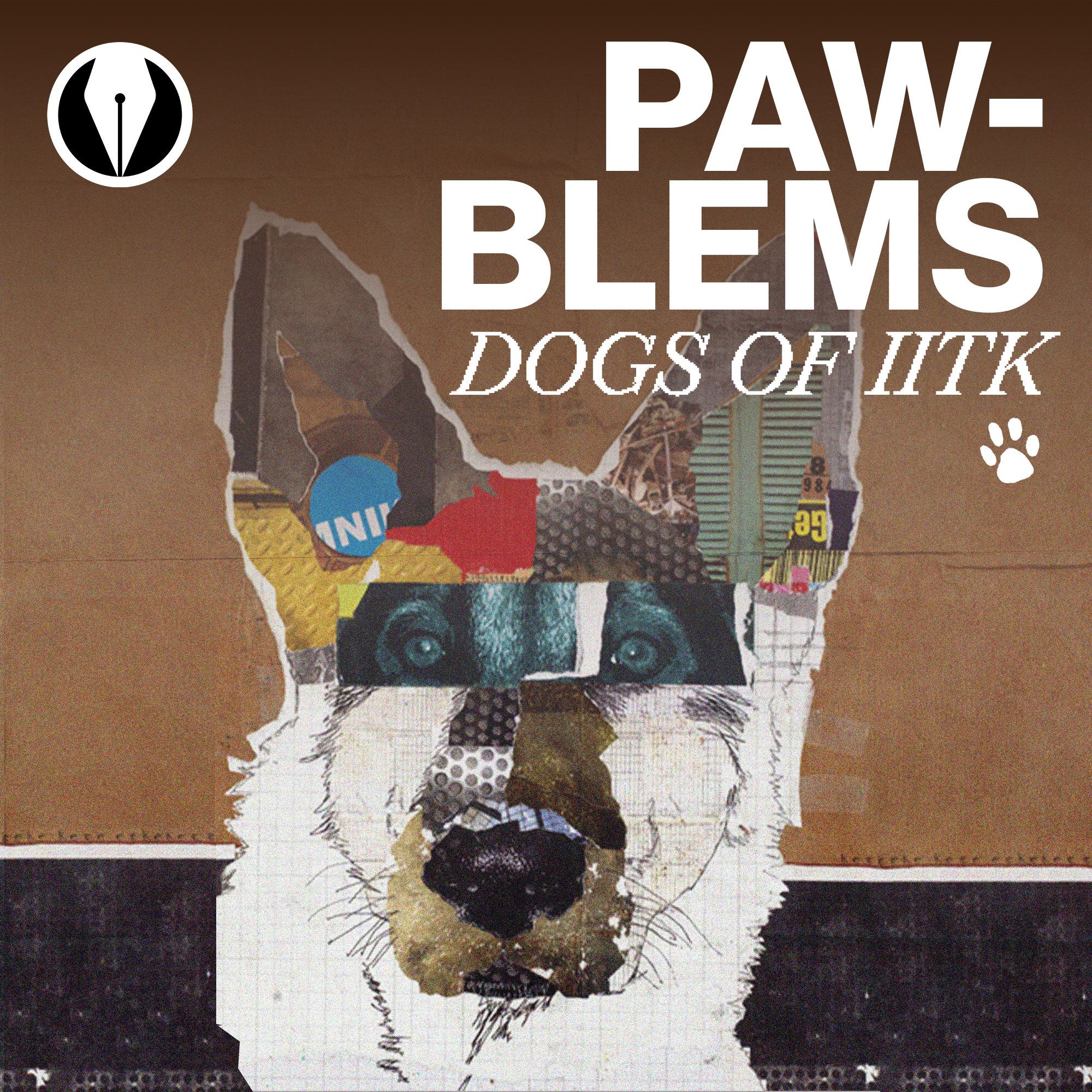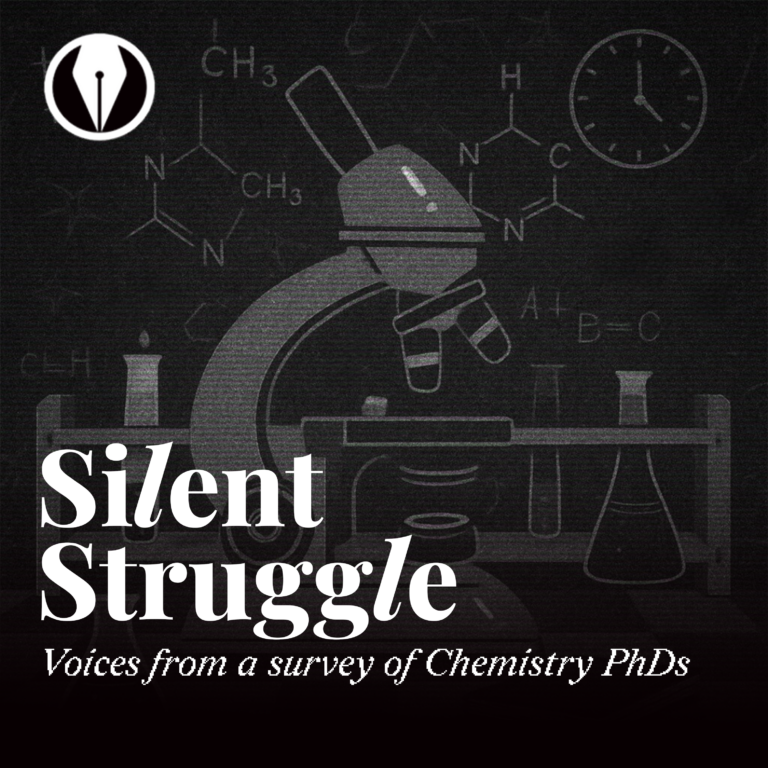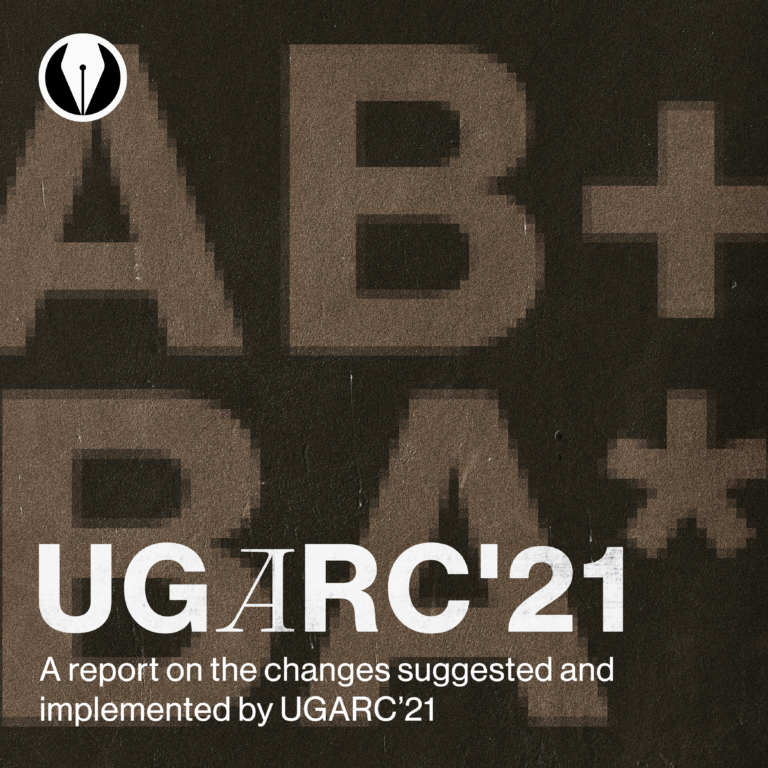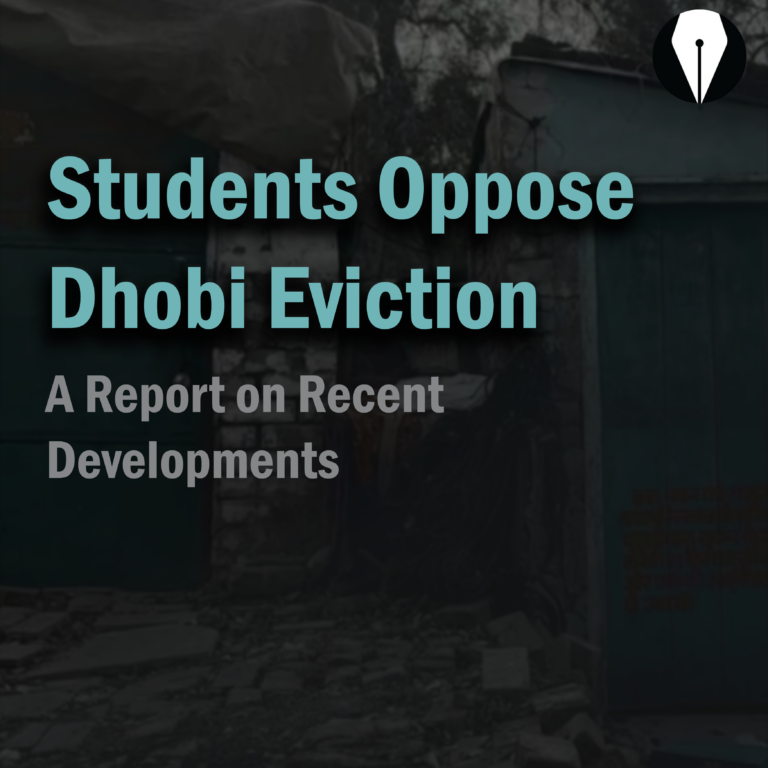The sight of tossed dustbins, scattered waste, and torn sanitary pads has become all too familiar for campus residents. Dogs have been found on various floors of residential halls in search of food. Incidents of destroyed belongings, including bitten shoes and damaged clothing, are rising. Some areas have witnessed aggressive dogs chasing campus residents, leading to injuries or dog bites. Some students have further mentioned how this affected their academics. Additionally, the incessant barking of dogs has become a source of significant nuisance. These dog behaviours can be observed in different pockets of the campus.
The history of the relationship between humans and animals spans a broad spectrum, from companionship to parasitism. Often when we think about animals and companionship, dogs come first to mind. However, the issue of stray dogs is a global concern, and our campus is no exception. This article focuses on the coexistence of two different categories of living beings. Vox delves into this complex issue in this investigative report, speaking with students, administration, and key stakeholders.
What do the students think?
The campus community can be broadly categorised into three groups based on their opinion on the issue, as observed by our team. The first includes people who have a soft spot for dogs. They oppose the removal of dogs from hall premises and propose alternative solutions, such as creating designated feeding zones, installing gates on staircases, individual adoption of dogs, protective cover and lifting of the waste bins, and conducting sensitisation campaigns within the campus community. They also encourage methods, like spraying water, to discourage dogs from specific areas. Some individuals actively volunteer to care for the dogs, monitoring their behaviour and promoting awareness through posters and educational campaigns. They further help with the smooth conduction of the sterilisation drive, as they act as a trusted entity for the dogs.
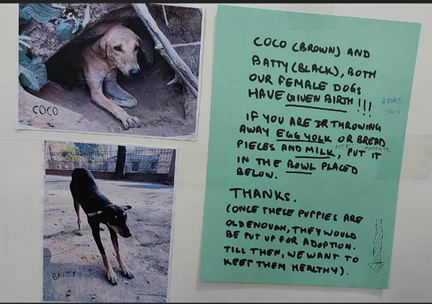
The second group believes that removing dogs from residential areas is essential, as their presence disrupts routine activities and raises concerns about safety, hygiene and comfort. According to one HEC member, many residents fear the dogs, who sometimes enter rooms and create a mess. The constant littering also places additional burdens on sanitation efforts, and some halls have taken decisive action to remove dogs from the premises to mitigate these issues.
The third group is the indifferent people. They do not hold strong opinions or are open to the suggested remedies. However, recent dog-related incidents have prompted many to reconsider their stance. For instance, 17 dog bites were reported to the Health Centre between 3rd June and 27th July 2023, even when a large section of the students weren’t on campus.
Faced with these problems, several Hall Executive Committees (HECs) have taken measures to remove dogs from their respective halls. This decision to remove dogs in Hall 4 was made by surveying hall residents and considering the majority’s opinions.
Subject: Opinion on dogs' removal
Dear residents,
In the past few months, a lot of residents faced severe grievances due to the dogs in hall-4. Despite several notifications and warnings, some residents continue to feed and entertain them inside hall premises. This has led them to become aggressive towards other residents. Thus, with the help of our respected wardens, we have decided to remove the dogs from hall-4. In this regard we would like to have a clear opinion from the residents first before taking action. Please take a bit of time to fill up the google form regarding the same.
Form link
Thanks and Regards

The follow-up mail!
Dear All,
As we know that a lot of residents are facing serious issues regarding dogs in our hall, the HEC has decided to take help of the Animal Cell of IIT Kanpur to help us remove the dogs from our hall. For this to be enforced, we requested the respected wardens to communicate with the Animal Cell. Now, we need the support and endorsement of the residents on the letter written to the wardens for swift enforcement. A letter is kept at the hall office for the residents to endorse. You are just required to sign there with your room number, at your own convenience withing office hours. We are extremely grateful for the residents who shared their woes and bad experiences due to the dogs in our hall, and thus could come to a conclusion to remove them. We are attaching the results of the google form circulated previously in this regard.
We believe that no resident should have to jeopardize their studies and mental peace, especially at night after a long tiring day at lab/class, besides several inconveniences like damage to personal stuffs in the corridors. Thus, the decision needed to be taken with strong hands.
However, we do not
intend to hurt any creature in this process. The dogs will be well taken care
by the Animal Cell of IIT Kanpur, as informed by the wardens.
Thanks and Regards
HEC Team
Hall-4, IIT Kanpur

This initiative began with Hall 8 and was followed by Hall 4. However, the promised relocation to a safe shelter has fallen short, as dogs were often found outside the halls during the initial stage.
This process of dog removal was later implemented in Hall 10, Hall 11, and GH1 around last year. This sudden removal created tension in the Chaupati area (new Mama Mio) as dogs identified it as a new food source, according to a volunteer.
Legal Considerations
It’s important to note that dogs are territorial animals, which means they occupy and protect specific areas throughout their lives. According to the Prevention of Cruelty to Animals Act of 1960, under section 38 of the Animal Birth Control (Dogs) Rules 2001, dogs cannot be removed or relocated from their territory (Q11 in the doc). The prescribed method for capturing, sterilising, immunising, and releasing dogs involves specific steps:
Reporting a nuisance or dog bite case to the nearest animal welfare organisation is to be taken care of on a priority basis.
The organisation takes in a specific number of dogs under its care
And releasing them back to the exact location.
The process retains the original territory of dogs. In our campus context, the organisation responsible for undertaking the steps is the Animal Welfare Cell, IIT Kanpur (AWC).
Administrative structure – The AWC
Ensuring peaceful coexistence between dogs and humans on campus has proven to be a significant challenge for both the administration and the student body. Established on December 31, 2018, the Animal Welfare Cell is tasked with enforcing the Prevention of Cruelty towards Animals Act (PCA Act 1960). It collaborates with local authorities to protect animal rights and conducts sensitisation drives to maintain a balanced animal population within the campus, along with healthy cohabitation between humans and animals.
The core members are a Chairperson, faculty advisors, local animal officers, and student nominees. Apart from them, the AWC also relies on its dedicated volunteers. These volunteers work diligently to minimise any harm caused by animal aggression or human interaction. They belong to the first school of thought, as mentioned above.
During the two-year lockdown, sterilisation efforts within the campus were halted due to the absence of residents on campus, leading to a tremendous increase in the dog population. Despite a defunct period post-COVID, AWC has gotten active again recently in the current tenure. It has resumed sterilisation efforts and is planning and organising sensitisation talks, the first of which took place on the 9th of October, 2023. Prof. Amit Mitra, the Chairperson of AWC, acknowledges the critical role of students in successful sterilisation drives.
“Students are the integral part of the AWC, and any decision taken by AWC is brought into implementation only with their support; hence, they are given freedom, and for any decision, we try to actively involve both the student nominees in it.” -Prof. Amit Mitra
What does science say?
The talk on the 9th of October this year was conducted by Dr. Anindita Bhadra, a behavioural biologist studying dogs under the Department of Biological Sciences of IISER Kolkata. She explained the science behind numerous stray dog behaviours in her talk and emphasised that “one must understand animal ecology before formulating relevant policies.”
She also spoke about the aggressive behaviour of male dogs during the mating season and of female dogs when they have small pups, the role of male dogs in their upbringing, and the appropriate age for dogs to be adopted. She also explained how barking is the mark of reinforcing their territory.
On the feeding habits of dogs, she said that dogs are scavengers by nature, and they eat what they get, be it through begging or rummaging in the dustbins. Dogs pick a resting site based on closeness to the food source, visibility (for security), and direct view of the feeding site. While creating the designated feeding sites, the two most essential things to be considered are the dog’s territory and the distance from the resting site. Excessive petting and feeding would lead the dogs to enter the residential premises, and she recommends avoiding these in the area used by the people to reside. It is also important not to over-feed the dogs at these sites, as excess resources breed competition and conflict. There are further mentions that the dogs will have to naturally shift to that “better” territory instead of forceful eviction, which might lead to increased aggression.
She later tells us the importance of sterilisation to strike a balance so that the population doesn’t die out, ending the talk by stating that “dogs have survived not because of dog lovers or haters, but because of neutral people.” She repeatedly emphasised that coexistence is mandatory and that both parties need adjustments to cohabitate. She further explains how adjustment doesn’t mean sharing your residential space but acknowledging that the land we share belongs to the dogs equally as it does to the humans.
Co-Animal Coordination
Beyond dogs, the campus is also home to a significant population of peacocks. Concerns have arisen that dogs may be hunting peacocks, leading to declining numbers. Eight such cases were reported between January 1st and June 9th, 2023, as reported by the SIS office. This suspicion is not new; in 2018, a similar decline in peacock numbers prompted speculation about dogs killing them. At that time, the decision was made to move dogs to two feeding zones, but subsequent research revealed the presence of the Newcastle Virus in the peacocks, which led to the death.
Conclusion
In conclusion, the issue of aggressive dogs on campus is a multifaceted challenge that has gathered diverse opinions among the student body and administration. It raises concerns about safety, hygiene, and coexistence. As we’ve explored, some advocate for the rights of dogs and demand a healthy coexistence, while others emphasise the need to remove dogs to address their problems. The middle ground remains elusive, and the lines often blur between these stances. Legalities, campus sentiment, and the role of the Animal Welfare Cell all play a pivotal role in shaping the ongoing dialogue on this issue. Finding a balanced and sustainable solution that ensures both the welfare of dogs and the well-being of the campus community is undoubtedly a complex task. As discussions continue, it is clear that fostering understanding, cooperation, and empathy among all stakeholders will be essential to resolving this challenging situation.
Edited by: Gauravi Chandak
Written by: Aditi Khandelia, Maharajan, Zehaan Naik, Aditya V, Likhith Sai Jonna,


